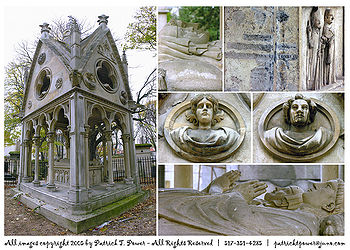Heloise
The letters of Heloïse (1101-1162) and Pierre Abélard are among the best known records of early romantic love.
Though Heloïse (also spelled Héloise, Hélose, Heloisa, and Helouisa, among other variations) is best known for her relationship with Peter Abélard, she was a brilliant scholar of Latin, Greek, and Hebrew and had a reputation for intelligence and insight. Not a great deal is known of her immediate family except that in her letters she implies she is of a lower social standing (probably the Garlande family who had money and several members in strong positions) than was Abélard, who was from the nobility.
What is known is that she was the ward of an uncle, a canon in Paris named Fulbert, and by the age of 18 she had become the student of Pierre Abélard who was one of the most popular teachers and philosophers in Paris.
In his writings, Abélard tells the story of his seduction of Heloïse, their secret marriage, the birth of a son, Astrolabius (in English, "Astrolabe"), and of his castration by her furious guardian, after which Heloïse entered a convent in Argenteuil.
At the convent in Argenteuil, Heloïse eventually became prioress. She and the other nuns were turned out when the convent was taken over, at which point Abélard arranged for them to enter the Oratory of the Paraclete, an abbey he had established, and Heloïse became the abbess there. It is from here that her contributions to monastic life for women were made.
Early Life
Seduction by Abelard
Life after Abelard's Castration
It was at about this time that a correspondence between the two former lovers sprang up. Heloïse encouraged Abélard in his philosophical work, and he dedicated his profession of faith to her. Heloise lamented her loss of Abelard's love, both sexual and intellectual or spiritual.
In his shame at not being able to be her husband physically, he insists that he will relate to her only as she is the "beloved of Christ."
Contributions to Women's Monastic Life
The Rule of Benedict, concerning monastic life, had lasted throughout the centuries had been adequate for the lives of men, but women's bodies were different with physical needs that were not covered in the Rule. Eloise had an urgent need to reform monastic life to accommodate the new and expanding community of women.
Legacy
In the obituary created by her nuns, Heloise was called their "great mother." Her contributions to the rule guiding the lives of nuns both greatly needed and pioneering, set the standard for all nunneries and lasted until the French Revolution.
There seems to be some dissent as to her actual resting place.
The Oratory of the Paraclete claims she and Abélard are buried on their site and that what exists in Père-Lachaise is merely a monument. According to the Père-Lachaise Cemetery, the remains of both lovers were transferred from the Oratory in the early 19th century and reburied in the famous crypt on their grounds. (illustration, left) There are still others who believe that while Abélard is buried in the crypt at Père-Lachaise, Heloïse's remains are elsewhere.
The love story of Abelard and Heloise inspired the poem "The Convent Threshold" by the Victorian English poet Christina Rossetti.
Howard Brenton's play In Extremis: The Story of Abelard and Heloise premiered at Shakespeare's Globe in 2006. Template:NamedRef
In the novel The Romantic by Barbara Gowdy the two central characters take their names from Heloise and Abelard (Louise and Abelard in the novel).
ReferencesISBN links support NWE through referral fees
- Burge, James. Heloise & Abelard: A New Biography (Plus). HarpersSanFrancisco, 2006. ISBN 978-0060816131
- Clanchy, Michael, Betty Radice, trans. The Letters of Abelard and Heloise. Penguin Classics; Revised edition, 2004. ISBN 978-0140448993
- Mews, Contant J., Neville Chiavaroli, trans. The Lost Love Letters of Heloise and Abelard: Perceptions of Dialog in Twelfth-Century France (The New Middle Ages). Palgrave Macmillan; new ed. 2001. ISBN 978-0312239411
- Wheeler, Prof. Bonnie. Medieval Heroines in History and Legend. The Teaching Company, 2002. ISBN 1-56585-523-X
External links
- Abelard and Heloise from In Our Time (BBC Radio 4)
- The Letters of Abelard and Heloise
Credits
New World Encyclopedia writers and editors rewrote and completed the Wikipedia article in accordance with New World Encyclopedia standards. This article abides by terms of the Creative Commons CC-by-sa 3.0 License (CC-by-sa), which may be used and disseminated with proper attribution. Credit is due under the terms of this license that can reference both the New World Encyclopedia contributors and the selfless volunteer contributors of the Wikimedia Foundation. To cite this article click here for a list of acceptable citing formats.The history of earlier contributions by wikipedians is accessible to researchers here:
The history of this article since it was imported to New World Encyclopedia:
Note: Some restrictions may apply to use of individual images which are separately licensed.


